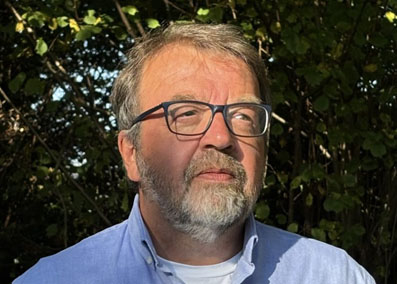
Gert Hendrickx, senior consultant at RSK Energy
Now that large companies will have to prepare verified sustainability reports in addition to their annual accounts in line with European Corporate Sustainability Reporting Directive legislation, attention is drawn to the financial risk presented by potential stranded assets. These are investments that run the risk of not fitting into the real energy transition that businesses will have to go through. RSK Energy Senior Consultant Gert Hendrickx explores how to navigate and respond to the changing policy in the energy transition.
Make no mistake about the goal
The sector is familiar with energy audits and the search for efficiency gains in energy use. Energy monitoring, smart heat recovery and combating slumber consumption have been a focus for years. These systematic investments in the best available techniques contribute greatly towards optimal energy efficiency. But there is risk.
Incoming changes to carbon emissions policy across the European Union are anticipated to have an impact on all energy consumers. Where currently big industry and manufacturing businesses are charged for their energy-linked carbon emissions, this will soon change to cover the purchase of energy by all consumers. This former ‘shadow cost’ of CO₂ will gradually translate into real costs that impact all manufacturing and food businesses and will have a notable impact on operating costs for fossil fuel energy systems.
This change will affect technologies that run on fossil fuels. Even the most efficient systems will see an uplift in energy cost. When it is at risk of becoming financially unsustainable, that smart investment becomes a stranded cost that will not be able to meet its forecast return and becomes a locked-in investment.
Rethinking the energy system
In the face of these changes, the energy supply to manufacturing processes should be examined more thoroughly. The end goal should be to minimise fossil fuel use or, if possible, design them out completely.
The technological options to enable such a change are available. To make the most of these new technologies, reconsidering the way we think about temperature levels is important. In many manufacturing and food processes, energy supply is not the challenge of reducing fossil fuel use: the need for high temperatures is.
The first step is to understand where low and high temperatures are needed in production processes. For heating water and air at low temperatures, the switch to heat pumps is an obvious and simple solution. The choice of the heat source for these systems – ground, water, air, for example – is renewable and therefore not impacted by changing carbon legislation.
Electrification is the easiest way to become carbon neutral, as the electricity supply, both locally and on the grid, is increasingly renewable.
What about high temperature energy?
Achieving high temperatures has been delivered by fossil energy sources for centuries. Here too there are smart solutions that reduce the dependencies on this infrastructure, building resilience against increasing operating costs.
Take the example of steam production, which is used across many different processes in the food and manufacturing industry. This workhorse resource is extremely optimised in its production process. If theoretical energy required in the production process is looked at closely, a large system gap can be found: energy that was generated but not effectively used. This can compound the energy cost challenge and further contribute to asset stranding.
This system gap can be addressed by decentralising the energy supply. Electrical systems are highly suited for small local systems that are close to the installations that require the energy. This is the best place for fine tuning and adjustments. Switching to an electrical system for steam production that is located next to processing equipment where it is needed becomes a viable alternative to fossil fuel systems. The additional cost of upgrading to electricity-powered systems can be largely compensated by higher energy efficiency in use. There are also subsidies available for these investments to support businesses in the energy transition.
Switching to electrification through thermal oil systems or electric steam boilers, for example, presents real opportunities for resilience. Of course, central systems can also be switched to renewable fuels, opening up the potential for full renewable power in the near future.
As policy and operational efficiencies of existing technologies evolve, situations where a high temperature need can be met only with fossil fuels are becoming increasingly less frequent. For large carbon emitters, carbon capture systems can be a solution, combined with carbon storage or the utilisation of the carbon.
For smaller emitters, so-called carbon credits can be used in the transition phase; these are proof that the emitted CO₂ is compensated by an equal amount removed from the atmosphere. The European Commission is working on a robust legal framework to make this method watertight.
While there are challenges ahead to navigate, the energy transition is an exciting and feasible challenge, not a burden.
Gert Hendrickx is a senior consultant at RSK Energy, a specialist provider of energy consulting services based in Belgium. He is an expert in energy efficiency and transition and has more than 25 years’ experience in the industry. Gert gives guest lectures at universities, carries out official energy audits and is a member of ie-net, the association of Belgian- and Dutch-speaking engineers.
KeyFacts Energy Industry Directory: RSK Group
 KEYFACT Energy
KEYFACT Energy